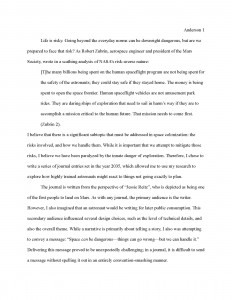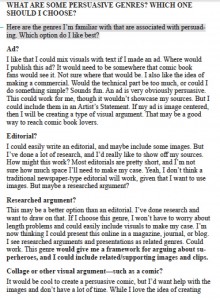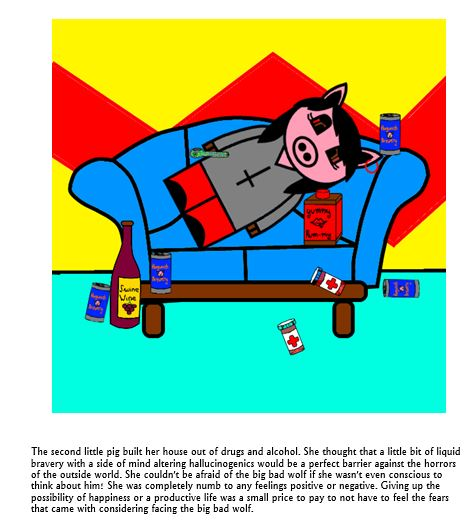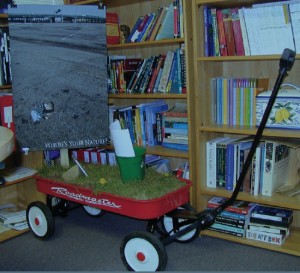We’re thrilled to announce our latest Hack and Yack Series. Over the next four weeks, Amy Braziller and Elizabeth Kleinfeld, authors of The Bedford Book of Genres, will be sharing with us an extended look at multimodal composition. Whether you’ve been teaching multimodal composing for a while or you’re not sure where to begin, be sure to tune in Thursdays in September. Amy and Elizabeth have something for everyone. They will share the myths of multimodal composition, considerations for “going multimodal,” anecdotes from their own classrooms, and lots of strategies to help us all become more mindful of our writing pedagogy.
Welcome, Amy and Elizabeth!
***
So you want to multimodal. You’re psyched, excited about a new approach and already anticipating the cool projects your students will create. But as you start sketching out a syllabus and assignments, you stop. Stymied. Worried. The voices of colleagues and other naysayers reciting the reasons to not go multimodal echo in your head. You wonder what is reality, what is myth.
Five Myths (and their realities)
Students won’t write enough
Oftentimes, people believe that when students compose podcasts, photo essays, billbo ards, digital stories, and other genre pieces that are not primarily text, they don’t get the writing experience that a composition class should deliver. There’s worry that students are not doing the work of a writing class. This is simply not true; our students write constantly. Every composition our students create is accompanied by an argumentative/reflective essay articulating the choices made in the composing process and arguing that they are appropriate for the rhetorical situation. Sometimes, prior to beginning the composition, students might submit a written proposal, discussing their ideas and providing justification for their approach. In reality, our students may actually write more than a traditional approach would ask them to.
ards, digital stories, and other genre pieces that are not primarily text, they don’t get the writing experience that a composition class should deliver. There’s worry that students are not doing the work of a writing class. This is simply not true; our students write constantly. Every composition our students create is accompanied by an argumentative/reflective essay articulating the choices made in the composing process and arguing that they are appropriate for the rhetorical situation. Sometimes, prior to beginning the composition, students might submit a written proposal, discussing their ideas and providing justification for their approach. In reality, our students may actually write more than a traditional approach would ask them to.
Students won’t learn what they need to be successful in their other writing classes
We’ve heard people call a multimodal composition class an “arts and crafts” class and question how creating a podcast or advertising campaign could help students with writing the typical college essay or research paper. The benefit of a multimodal approach is that students learn to an alyze complex rhetorical situations, and every college writing assignment presents a rhetorical situation to be analyzed and responded to. A key learning outcome for most composition classes is to write within a rhetorical situation. With a multimodal approach, students have to think much more carefully about their purpose, audience, and chosen rhetorical appeals and then consider which genres and modes of composition match this rhetorical situation best. Many types of composition might fit the situation, so a student learns to become flexible and critical, examining the situation and making choices. They might try something and discover that choice doesn’t help them achieve their purpose. They start over. They revise. They reflect. They repurpose.
alyze complex rhetorical situations, and every college writing assignment presents a rhetorical situation to be analyzed and responded to. A key learning outcome for most composition classes is to write within a rhetorical situation. With a multimodal approach, students have to think much more carefully about their purpose, audience, and chosen rhetorical appeals and then consider which genres and modes of composition match this rhetorical situation best. Many types of composition might fit the situation, so a student learns to become flexible and critical, examining the situation and making choices. They might try something and discover that choice doesn’t help them achieve their purpose. They start over. They revise. They reflect. They repurpose.
You have to be an expert in so many genres/modes
 Magazine articles. Brochures. Digital stories. Podcasts. Graphic memoirs. The list of genres students compose in can be endless. You’re not skilled in graphics; you’re only able to draw stick figures to illustrate a graphic memoir. It doesn’t matter. Concentrate on teaching students how to recognize
Magazine articles. Brochures. Digital stories. Podcasts. Graphic memoirs. The list of genres students compose in can be endless. You’re not skilled in graphics; you’re only able to draw stick figures to illustrate a graphic memoir. It doesn’t matter. Concentrate on teaching students how to recognize
and analyze the conventions of a particular genre. They can then apply these analytical skills to the genre piece they’ve chosen to create. They’ll show you the app on their phone for recording a podcast. They’ll show you the web page for creating an infographic. They’ll show you the latest fanzine for their favorite local band and explain to you how it differs from a booklet. Students become experts and teach you. Your job isn’t to be the expert on every genre, but rather to teach students how to become an expert on the genre in which they want to compose.
You have to be a technowiz
 Multimodality does not necessarily mean high tech. Sure, lots of multimodal compositions might incorporate flashy visuals and intricate audio. But that’s not necessary. A billboard can be created on a computer. Or a billboard can be created using markers, scissors, glue, and cardboard. Students can create low-tech projects. Some of the most powerful projects our students have created did not involve technology, such as the giant paper-mache pill capsule that opened up to reveal other project components and the portable backyard (a Radio Flyer wagon filled with dirt, soil, grass, and a plant).
Multimodality does not necessarily mean high tech. Sure, lots of multimodal compositions might incorporate flashy visuals and intricate audio. But that’s not necessary. A billboard can be created on a computer. Or a billboard can be created using markers, scissors, glue, and cardboard. Students can create low-tech projects. Some of the most powerful projects our students have created did not involve technology, such as the giant paper-mache pill capsule that opened up to reveal other project components and the portable backyard (a Radio Flyer wagon filled with dirt, soil, grass, and a plant).
Students will embrace multimodal composing
They are purveyors of the visual. The audio. It’s native to their generation. They have grown up watching YouTube, listening to sound bytes, doing all of their communication on a phone. But this doesn’t mean that they have done a lot of composing. Sometimes they initially resist the idea of creating multimodal compositions, preferring the familiar, the text, the essay. They believe that’s easier because they are already familiar with it. The reality is that you will have to sell your students on the value of a composition class whether you take a multimodal approach or a traditional approach.
With these five myths banished from your mind, you can charge ahead and plan your multimodal composition class.
Check back next Thursday for tips on crafting multimodal assignments to develop 21st century literacies.
